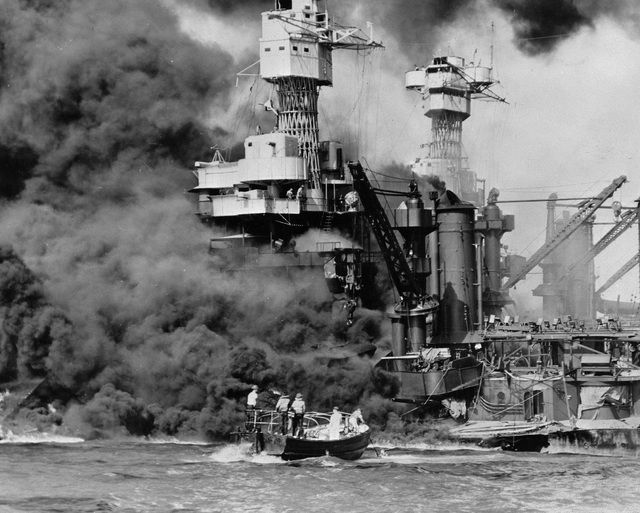Click here to subscribe today or Login.
Leroy Barber grew up in rural New London, Wis., hunting and fishing with two of his brothers. He enlisted in the Navy, trained at the Great Lakes facility north of Chicago and was assigned to a battleship. Barber enjoyed being a sailor, missed his brothers and advised them to join up. The Navy made an exception to its rule against putting family members on one boat — a decision their father sought to reverse — but America was not at war, and Hawaii was about as far from Europe’s fighting as you could get.
That’s how the Barber boys — Malcolm, 22, Leroy, 21 and Randolph, 19 — came to serve together as firemen on the USS Oklahoma. And that is how they died: together, on the morning of Dec. 7, 1941 when the Japanese attacked Pearl Harbor and drew America into World War II.
“We are not bitter, but there is one thing neither of us can forgive,” Peter Barber, their father, told the Chicago Tribune in May 1942. “We were at peace when the attack started. Our boys didn’t even know about it. They must have been caught below decks without any chance to fight back. If they had known — if we had been on guard — they would have returned fire, and they might not all have died.”
Many wars are remembered and battles commemorated. But only two dates on the calendar awaken recollections of a sneak attack on American territory by an undeclared enemy. One is Sept. 11, which was 15 years ago this year. And then there is Dec. 7, “a date which will live in infamy,” as President Franklin Roosevelt told Congress in a national radio broadcast the next afternoon.
The attack on Pearl Harbor was a surprise, but it was foreshadowed. In 1941, America was attempting to check Japanese aggression in China through economic sanctions. The U.S. knew from a code-breaking operation known as “Magic” that Japan was girding for war. Conflict seemed inevitable, but officials in Washington missed the signals that war was imminent, and never guessed Hawaii would be a target. The American public also was unprepared.
The U.S. military was not on alert in Hawaii. Most naval personnel treated Dec. 7, a Sunday, as a day off. Around 7 a.m., just as radar operators were completing their overnight watch, they spotted a stunning concentration of aircraft coming their way — must be B-17s coming in from California, they were told.
Wrong: This was the first Japanese carrier strike force of torpedo- and dive-bombers, escorted by Zero fighters. The Japanese attack, completed in two waves in less than two hours, destroyed most of the U.S. military planes on the island of Oahu and devastated the U.S. Pacific fleet. Most of the ships’ anti-aircraft guns were unmanned. A few heroic American pilots got off the ground to shoot down Zeros, but the day marked a humiliating and painful entrance to the war. The Barber brothers were among 2,300 U.S. service members killed.
Firsthand descriptions of Dec. 7 have dwindled as survivors depart us, but the lesson of Pearl Harbor endures. In 1941, the United States failed to anticipate Japanese aggression. In 2001, terrorists intensified a slow-burning war against American civilians that had started years earlier and continues today. Despite America’s great power and comparative isolation on the map, it is vulnerable to the enemies it has, and the ones it may have. Our nation forgets that at its peril.
— Chicago Tribune





